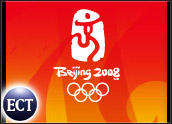
Industry participants and observers are looking for big things to happen in the smartphone space this year, as progress is being made in both technological and commercial realms.
The difficulties and challenges that lie ahead are considerable, however, certainly if the vision of converging “quad play” services that integrate fixed and mobile telecommunications — and all types of static and real-time media that many participants are working toward — is to be realized.
Impediments to Change
A bevy of emergent technical standards and formats constrain the distribution of content that should be available to smartphone users — for example, more and varied information, communication and entertainment “feeds.” On the technology side of things, network speeds, routing management, data storage capacity, power usage and digital rights management all continue to hamper the industry.
Adding to the complexity: a growing number of participants from across different markets and disciplines are getting involved in the smartphone market as it moves towards the convergence of media and fixed and wireless telecommunications.
“Combining WiFi and WiMAX broadband Internet access with PSTN (public switched telephone network) radios and intelligent roaming with GSM (global system for mobile communications) as a backup, for example, looks promising,” noted Myk Willis, cofounder and CTO of mVisible Technologies, a digital music distributor and technology developer.
“Most problems have to do with software and usability. WiFi radios are cheap, but the software, for roaming in particular, is cumbersome, and energy usage is still problematic. WiFi roaming is hard to do from a software point of view,” he claimed.
Awkward and poorly designed user interfaces (UIs) are likewise frequently cited as an impediment to increased smartphone usability. “Mobile is about instant access and gratification. If you don’t get something close to that, you might as well wait for richer experience on your PC or TV,” Bruce Gibson, a Juniper Research senior consultant, told TechNewsWorld.
“Where that line is will be different for different users [and] user groups,” he added. “Many of the developments in handset design, UI and search/navigation capabilities are about shifting that line more in favor of mobile.”
Back-Office Apps
Upstream access and application issues also pose problems, particularly when it comes to m-commerce, Gibson continued. “The back office applications are just as important as the UI. Convergent prepaid/postpaid mobile charging solutions will also boost m-commerce by providing flexible charging and balance/account management facilities to all customer types.”
“The ability to sell premium content and bill directly to the consumer’s phone bill has a profound impact on the reach of our products, because it frees the consumer from having to actually be sitting at a computer to purchase an item,” noted mVisible’s Willis.
Recently, mVisible began doing just that, a result of an agreement with mobile transaction network systems operator mBlox.
“mVisible is first and foremost an Internet-focused company,” said Willis. “In the past, our billing and payment was done exclusively using online mechanisms such as PayPal and online credit card processing.
“With the mBlox PSMS (premium short messaging service) partnership, we can extend the power of features such as MyxerCodes; any of the thousands of bands that use MyxerTones to distribute their mobile content can now sell their content directly to their fans from the stage at a concert. Previously, they would have either given the content away for free, or tried to get their fans to visit their Web site after the concert to purchase the content online,” Willis explained.
Cellular-WiFi Convergence, DRM and the iPhone
Two factors are holding back convergence, according to longtime industry observer and journalist Glenn Fleischmann. “First, most carriers aren’t ready to merge WiFi and cell on their networks. Only a few operators worldwide are trying this — most are a year or two away, at best.
“Whether or not BT in the UK sees a real uptake in their converged UMA (unlicensed mobile access) calling will show its benefits. The UMA or converged calling with seamless roaming from WiFi to cell and back has to find its way into smartphones; there aren’t any smartphones that offer that yet,” continued Fleischmann.
“Second, digital rights management (DRM) continues to dog storing media on a smartphone. While Verizon and other operators in the U.S. and worldwide have lots of plans that offer streaming media and more to come, stored media is the most popular way to get high quality audio and video, and the phones both lack the capacity — that will change — but, more importantly, lack the DRM infrastructure to allow legal music to be played,” he continued.
“The iPhone’s key advantage over competitors may not be the interface or touch screen,” Fleischmann noted. “It may be the fact that it’s perfectly simple to play music and video on an iPhone and also make calls and browse the Internet. There aren’t any compromises, except on the keyboard.”
Looking Ahead
When it comes to future growth drivers, smartphone and m-commerce industry participants are looking to the emergence of open industry standards and enabling technology to broadcast and stream interactive multimedia content.
Other m-commerce drivers include the large and fast-growing emerging markets outside the U.S. and Europe, and to increasing mobile phone usage by younger subscribers.
“Our view is that, whilst the ringtone market will continue to grow for the foreseeable future, continued price erosion will limit the revenue growth opportunities. TV (broadcast and streamed) and video, on the other hand, are really only acceptable services in 3G environments. Video services exist in 2.5G environments, but the user experience is not ideal,” claimed Juniper Research’s Bruce Gibson.
“Many mobile entertainment types benefit from the moving/high quality image and come-to-life with video content — certainly sports services, celebrity-based content, areas of user generated content (video and picture swapping) and adult content (both erotic and gambling-related),” Gibson continued.
“These services are only at the start of their growth path — hence, the sharper growth curve than for music though not music videos, which are not included in mobile music under Juniper’s definitions.
“Innovators tend to be the smaller independent software developers and ASPs (application service providers). Operators are generally more concerned with brands than innovation when it comes to content services,” he added.





















































